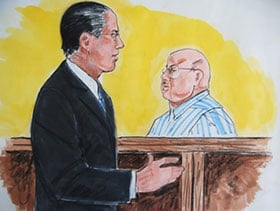In our last post, we began a discussion about the problems of forensic fire investigation. It is one of numerous types of forensic testing that is far less reliable (or scientifically sound) than the general public tends to believe. Problems with burn-pattern analysis have led to a number of wrongful convictions, as mentioned in our last post and in a recent Washington Post article.
Far from a perfect science
Arson investigation based on analysis of burn patterns is, at best, partly conjecture. It is not an exact science, even when investigations are conducted by the most knowledgeable experts. And sadly, those conducting investigations are often much closer to novice level than expert level. There are no national education requirements or proficiency tests needed to lead a fire investigation.
A local fire chief in a small town might conduct an investigation after taking a two-week training course. And to a jury, his testimony could prove to be as compelling as that of an internationally renowned forensic scientist. In such cases, it is up to the defense attorney to find a better expert to contradict the testimony and/or to show that the prosecution’s witness isn’t qualified to draw the conclusions being asserted.
Misconceptions and myths remain common
To be sure, investigating the charred ruins of a fire can reveal helpful information about things like where a fire originated. But they typically cannot prove whether a fire was intentionally set as opposed to accidental. Moreover, burn-pattern analysis is a relatively young form of forensic science, and the supposedly iron-clad conclusions of early arson investigators have been debunked or called into question. Nonetheless, myths and misconceptions remain. Some are described below:
Myth: Use of a chemical accelerant makes a fire burn hotter, leaving a distinctive burn pattern where the accelerant was applied.
Fact: Accelerants may help a fire spread more quickly, but they do not make it burn hotter.
Myth: Use of an accelerant would leave distinctive spider-web-like patterns on glass in the burned room.
Fact: This is a long-debunked belief that has been described by some as an “old wives’ tale.”
Myth: finding trace amounts of certain chemicals found in accelerants is proof that accelerants were used.
Fact: When fires burn, they can actually cause chemical reactions that would leave such “evidence” behind.
When accused of a serious crime, you need a seriously skilled lawyer
In at least one of the cases discussed in our previous post, the wrongfully convicted man was represented by an overworked and under-resourced public defender. While these attorneys work hard and are well-intentioned, they often lack the time and resources to give their clients the vigorous, detailed defense needed to clear their names.
If you’ve been accused of serious crime and your freedom (or life) is at stake, it is critical to seek help from the most skilled and experienced criminal defense attorney you can find.


